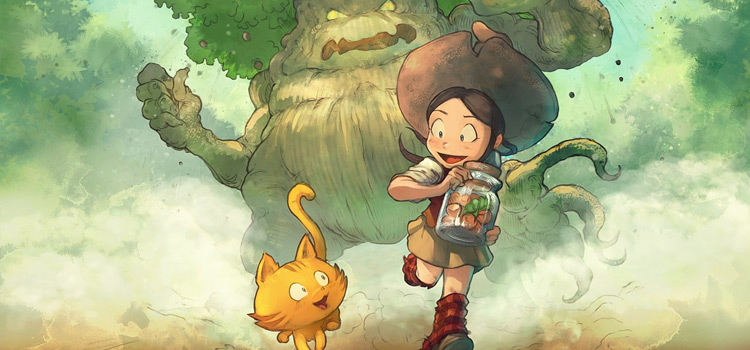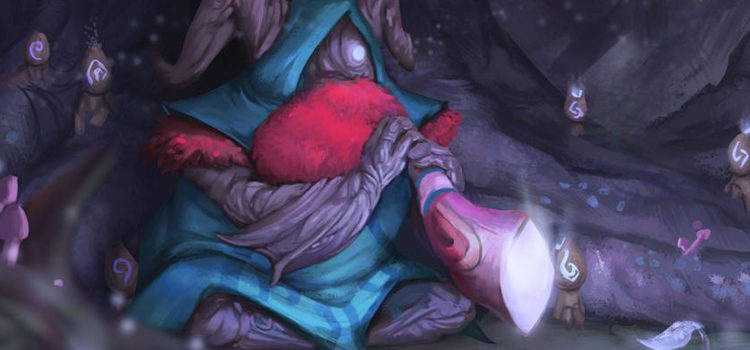What is a Familiar in D&D 5e?
This post may contain affiliate links. If you buy something we may get a small commission at no extra cost to you. (Learn more).
In 5e, when people talk about a Familiar, they’re usually referring to a spirit that is summoned using the spell Find Familiar.
This term has its roots in folklore, where a Familiar is a magical spirit that takes the form of something else, usually a small animal.
Familiars are known for helping magic users, like wizards and witches.
Find Familiar Spell
Find Familiar is a first level spell on the Wizard’s spell list that conjures a spirit Familiar of the type Fey, Fiend or Celestial, which takes the shape of an animal. Your choice of spirit type doesn’t usually matter much aside from influencing the familiar’s personality and alignment, although your choice of animal form is important.
The animal forms include bat, cat, crab, frog or toad, hawk, lizard, octopus, owl, poisonous snake, fish (quipper), rat, raven, sea horse, spider, or weasel.
Even when the familiar is in an animal shape, it technically remains fey, field or celestial. And it cannot be killed, although it vanishes if it drops to 0 HP until the find familiar spell is recast.
Casting Find Familiar takes 1 hour and requires 10 gp worth of material components. If cast as a ritual, it takes 70 minutes to cast.
The Familiar is not particularly “powerful” – it can’t even attack — but it is capable of doing a number of useful things for the caster such as scouting for danger, casting touch spells, using the help action, picking up or dropping objects, and several other actions.
The caster can also speak telepathically to the familiar and see through its eyes, hear through its ears, and use other special senses the familiar has.
A caster can also choose to temporarily dismiss its familiar into a pocket dimension. If this is done, the familiar can be re-summoned without having to re-cast the spell.
Many players consider Find Familiar one of the most useful spells in 5e, in large part because of the versatility of things a skilled player can do using their familiar. A familiar can also be a lot of fun for role-playing reasons.
Access to Find Familiar
Since Find Familiar is a ritual spell with indefinite duration, any player can easily get a familiar using either the feat Ritual Caster or Magic Initiate (Wizard).
Certain other characters can also gain access to a familiar.
Notably the Pact of the Chain Warlock gains access to a more powerful version of Find Familiar that lets its spirit alternatively take the form of an Imp, Pseudodragon, Quasit, or Sprite, all of which have special powers such as flight, invisibility, and/or shapeshifting.
Chain Pact warlocks also have access to several invocations that can make their familiar even more powerful and useful.
Pact of the Tome warlocks can gain Find Familiar if they take the Book of Ancient Secrets invocations.
Druids can also use their wild shape to conjure a familiar using the Optional Class Features from Tasha’s Cauldron of Everything, although that familiar only lasts a number of hours equal to half of the druid’s level.
Flock of Familiars Spell
The 2nd level spell Flock of Familiars is available to wizards and warlocks, and lets you summon up to three familiars for one hour.
This can be fun, but oftentimes having three familiars isn’t much more useful than having one.
Best & Worst Familiars
Honestly, there often isn’t a huge difference in the usefulness of different familiars.
It’s probably best to pick a familiar for role-playing reasons than for mechanical-optimization reasons.
However, there are a couple of forms that stand out for being slightly more useful.
The Owl can fly and has advantage on Perception checks that involve sight, which makes it pretty useful as a scout. In addition, the flyby trait means that it doesn’t provoke Opportunity Attacks (OAs) when it flies out of an enemy’s reach.
This makes it easier for the Owl to swoop into combat and provide the Help action to you or your allies without taking an OA. For these reasons, it’s the best standard familiar in my opinion.
Imp is arguably the best familiar for a Pact of the Chain warlock, since it can see through magical darkness, can become invisible, shapechange and fly, has advantage on saving throws against magical effects, and does bonus poison damage.
And since your familiar is a spirit and not an actual imp, its alignment doesn’t need to be evil.
So what are the worst familiars?
I’d have to say Fish (Quipper) or the Sea Horse are definitely worth avoiding, since they’ll quickly die if they leave the water.
If you want a familiar that can swim, you’re better off going with a crab, octopus, frog, or poisonous snake.
D&D Familiars Are Fragile
Really fragile!
Many of them only have 1 hp. So you need to be careful during combat.
Fortunately, enemies don’t usually have much cause to target your familiar. So you’re probably OK to use your familiar during combat as long as you don’t trigger any opportunity attacks.
Also, keep them away from your party if possible. Because any sort of area spell will kill your familiar.
But even if your familiar “dies,” you can resummon them with an hour’s time and 10gp of materials.
A Pact of the Chain warlock’s familiar is tougher than the average familiar, but it’s still not very tough. You should still be careful with your familiar.
And it’s worth noting that most of your familiar choices have abilities that keep them safer during combat, such as flight and invisibility.
Changing Your Familiar’s Shape
If you want to change your familiar’s shape, you need to re-cast your find familiar spell.
This isn’t too big of a deal.
But 10gp per casting can start to add up.
Still there are times when it can be very useful to change shape, but it’s just good to know you can choose to do this.
Casting Touch Spells
There aren’t many touch attack spells in 5e, so it’s not all that useful to use your familiar to deliver an offensive strike. Also, using a familiar to deliver a touch attack is dangerous and likely to get your familiar killed.
Note: if you want to do this, the owl is probably your safety choice.
However, it definitely can be useful to deliver a touch buff spell to an ally, since there are several good touch spells that you might want to use on your allies.
Scouting With Familiars
As I said, familiars make great scouts.
Unfortunately, most familiars are surprisingly not all that good at stealth.
For example, we humans might think of rats as stealthy. But in 5e they have no bonus to stealth checks.
However, keep in mind that (a) rats can hide almost anywhere, and (b) most people in D&D aren’t all that worried about rats. So if your familiar is spotted, you might want to remind your DM that most folks wouldn’t worry much about a rat, stray cat, or spider.
Alternatively, you might argue for your familiar to gain advantage on their stealth checks at times.
Help Action
Providing the Help action can be quite useful in combat, especially if you have someone who really needs it – for example, the familiar could distract an enemy so that someone else can get advantage on their next attack against it.
Or perhaps you could help a barbarian that’s grappling with the BBEG.
However:
(a) A familiar needs to be within 5 feet of a creature in order to provide help on an ability check, or within 5 feet of an enemy in order to distract them and grant advantage on a single attack roll against that creature.
(b) According to Chapter 7 of the Player’s Handbook, a character can only provide help for a task that they could do by themselves. Since familiars cannot pick locks, they could not use the Help action to assist in picking locks. However, it could easily be argued that some familiars (ex, snake or octopus) are good at grappling enemies and could help the barbarian grappler. Since a spider is unlikely to be effective at grappling most creatures, a spider probably shouldn’t be allowed to help in a grappling attempt.
Note: helping during combat could easily put your familiar in harm’s way, so be careful.
Any player who wants to use the help action a lot should consider the owl for its Flyby ability.
Teleportation
By sending your familiar to a demi-plane and then returning it, you can effectively teleport a familiar to any location within 30 feet of you that’s visible.
This isn’t super-useful most of the time.
But there may be times when it is useful, such as teleporting your familiar into a locked building through the window. This is just something else to keep in mind.
Range With Familiars
A caster needs to be within 100 feet of their familiar to communicate telepathically with it, to access its sight and senses, or to use it to deliver a touch spell.
However, there’s nothing preventing a familiar from venturing as far as it wants to go.
Chain Pact warlocks can even take an invocation that allows them to communicate with their familiar anywhere on the same plane of existence.
Casting Spells on Familiars
There are a ton of spells that you could cast on a familiar, but odds are those spells would be much more effective if cast on another PC.
Remember: your familiar could probably be “killed” instantly by most enemies. But there are times when you might want to cast a spell on a familiar.
Concentration spells with a radius might have utility if cast on a familiar, such as light or darkness… or better yet, cast the spell on a rock and have the familiar carry around the rock.
If you want to turn your familiar into a weapon, you can cast Dragon’s Breath on it, so it can breathe fire (etc.) like a dragon… which is pretty awesome… until it’s targeted by an enemy.
Magic Items
Familiars can use magic items and attune to those magic items.
However, most familiars probably can’t activate a magic item if it requires activation.
Bonus Actions
It’s worth mentioning that it takes a bonus action to command most summoned creatures to take an action.
That’s not true with find familiar.
A familiar should not require a character to use its bonus action. So keep this in mind while playing!
Perception and Senses
To quote from the 5e rules for Find Familiar:
“While your familiar is within 100 feet of you, you can communicate with it telepathically. Additionally, as an action, you can see through your familiar’s eyes and hear what it hears until the start of your next turn, gaining the benefits of any special senses that the familiar has. During this time, you are deaf and blind with regard to your own senses.”
Interpreting these rules is a bit confusing.
Whose perception skill do you use, yours or the familiars?
Or do you roll twice, once for you and once for your familiar to perceive the situation?
The most common interpretation of these rules goes as follows:
If a familiar is on its own, it needs to make its own perception checks. But if you’re seeing through your familiar’s eyes, you can use your perception skill to make the perception checks yourself.
This is a good thing because if you’re proficient in perception, you likely have a larger bonus to perception than most animals. However, if the animal has any special senses, you can apply those bonuses to your perception check.
For example, if you’re perceiving through an owl familiar, you would get advantage on perception checks involving sight or hearing, but not on smell.
But since perceiving through a familiar takes your action each turn, and since you’re blind and deaf to your own sensations while this happens, perceiving through a familiar creates a lot of limitations.
For example, if you knew you were fighting a medusa, you could protect yourself (but not your familiar) from the medusa’s petrifying gaze by using your action to look through the familiar’s eyes.
Yet doing so would take your action each turn.
On the plus side, you could cast spells that require line-of-sight, although you would be limited to casting spells that used a bonus action or reaction since your action was already used.
Note: you could also apply these same rules to other sense-based skill checks, such as insight and investigation.
Acting in Combat (And Other Info For DMs)
Here are some final thoughts for players and DMs regarding familiars.
These are items that players and DMs should discuss and agree upon:
1: The rules say that a familiar acts on its own initiative. I suggest changing this so that the familiar acts on the caster’s initiative. Doing this takes less time and helps keep the combat moving smoothly.
2: The question may come up, “Who Controls the Familiar?”
Many DMs let players control their familiars.
But per the rules, it’s up to the DM to decide, and a DM can choose to control the familiar at times or always. If the DM chooses to control a familiar, that DM definitely should allow the PC to issue commands to the familiar on the familiar’s turn (and remember it has telepathy up to 100-feet).
How well it understands those commands is at the DM’s discretion.
3: How powerful is a familiar?
There are players who try to use a familiar to grant advantage on pretty much every ability check ever made.
On the opposite side of the spectrum, there are DMs that seem to want to keep a familiar from having any impact on the game.
So which way is it?
I think the answer lies somewhere in the middle.
Familiars are supposed to be useful and fun. So if you want a familiar to help with something, be sure to have a reasonable narrative explanation for how it’s going to help.
Also realize that the more risks a familiar takes, the more likely it is to be targeted by attacks… although it’s not a bad thing for a familiar to get attacked. Because it’s a spirit and not an actual animal, it can easily be re-summoned.
Plus, attacks on a familiar are attacks that are not targeting PCs, who are much harder to revive.
Ultimately, playing with a familiar requires a sense of fun and a sense of balance.
As long as everyone is having fun with the familiar, it’s probably fine.
But if anyone seems like they’re frustrated by the familiar (including the caster, DM, or other players), then there might be an issue. Talk through the frustrations with each other so everyone can go back to having fun!






